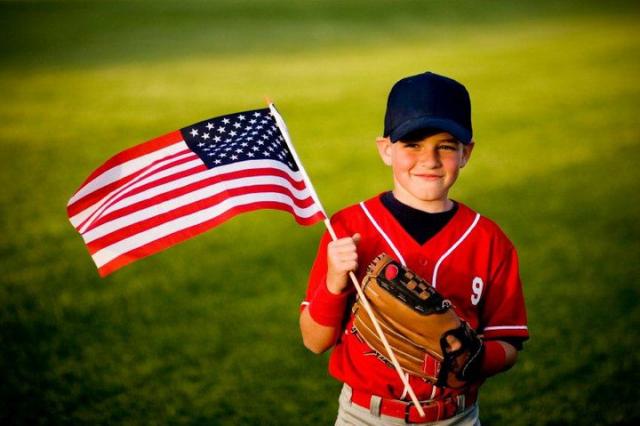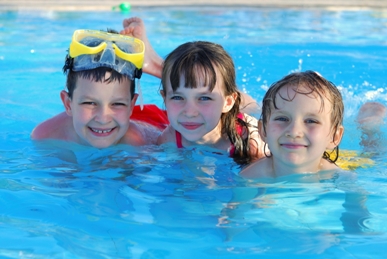Parents: you can keep your family safe this summer by remembering these important tips:

Sun safety
Babies under 6 months:
- Avoid sun exposure, and dress infants in lightweight long pants, long-sleeved shirts, and brimmed hats that shade the neck to prevent sunburn.
- When adequate clothing and shade are not available, parents can apply a minimal amount of sunscreen with at least 15 SPF (sun protection factor) to small areas, such as the infant's face and the back of the hands. If an infant gets sunburn, apply cold compresses to the affected area.
For All Other Children:
- The first, and best, line of defense against the sun is covering up. Wear a hat with a three-inch brim or a bill facing forward, sunglasses (look for sunglasses that block 99-100% of ultraviolet rays), and cotton clothing with a tight weave.
- Stay in the shade whenever possible, and limit sun exposure during the peak intensity hours - between 10 a.m. and 4 p.m.
- On both sunny and cloudy days use a sunscreen with an SPF of 15 or greater that protects against UVB and UVA rays.
- Be sure to apply enough sunscreen - about one ounce per sitting for a young adult.
- Reapply sunscreen every two hours, or after swimming or sweating.
- Use extra caution near water and sand (and even snow!) as they reflect UV rays and may result in sunburn more quickly.
Heat /Stress in exercising children
- The intensity of activities that last 15 minutes or more should be reduced whenever high heat and humidity reach critical levels.
- At the beginning of a strenuous exercise program or after traveling to a warmer climate, the intensity and duration of exercise should be limited initially and then gradually increased during a period of 10 to 14 days to accomplish acclimatization to the heat.
- Before prolonged physical activity, the child should be well-hydrated. During the activity, periodic drinking should be enforced, for example, each 20 minutes, 5 oz of cold tap water or a flavored sports drink for a child weighing 90 lbs, and 9 oz for an adolescent weighing 130 lbs, even if the child does not feel thirsty.
- Clothing should be light-colored and lightweight and limited to one layer of absorbent material to facilitate evaporation of sweat. Sweat-saturated shirts should be replaced by dry clothing.
- Practices and games played in the heat should be shortened and more frequent water/hydration breaks should be instituted.
Pool safety
- Install a fence at least four-feet high around all four sides of the pool. The fence should not have openings or protrusions that a young child could use to get over, under, or through.
- Make sure pool gates open out from the pool, and self-close and self-latch at a height children can't reach.
- If the house serves as the fourth side of a fence surrounding a pool, install an alarm on the exit door to the yard and the pool.
- Never leave children alone in or near the pool or spa, even for a moment.
- Keep rescue equipment (a shepherd's hook - a long pole with a hook on the end - and life preserver) and a portable telephone near the pool. Choose a shepherd's hook and other rescue equipment made of fiberglass or other materials that do not conduct electricity.
- Avoid inflatable swimming aids such as "floaties." They are not a substitute for approved life vests and can give children a false sense of security.
- Children age 4 and older should be taught to swim. Parents may choose to start swimming lessons before age 4 if their children are developmentally ready, but swim programs should never be seen as "drown proofing" a child of any age.
- Whenever infants or toddlers are in or around water, an adult should be within arm's length, providing "touch supervision."
- Avoid Entrapment: Suction from pool and spa drains can trap an adult or child underwater. Do not use a pool or spa if there are broken or missing drain covers. Ask your pool operator if your pool or spa's drains are compliant with the Pool and Spa Safety Act.

- Large inflatable above-ground pools have become increasingly popular for backyard use. Children may fall in if they lean against the soft side of an inflatable pool. Although such pools are often exempt from local pool fencing requirements, it is essential that they be surrounded by an appropriate fence just as a permanent pool would be so that children cannot gain unsupervised access.








